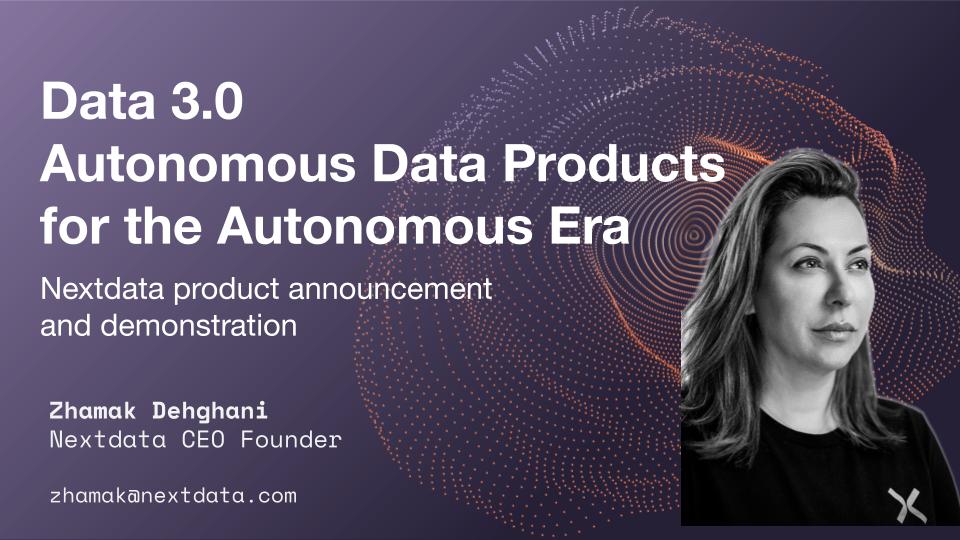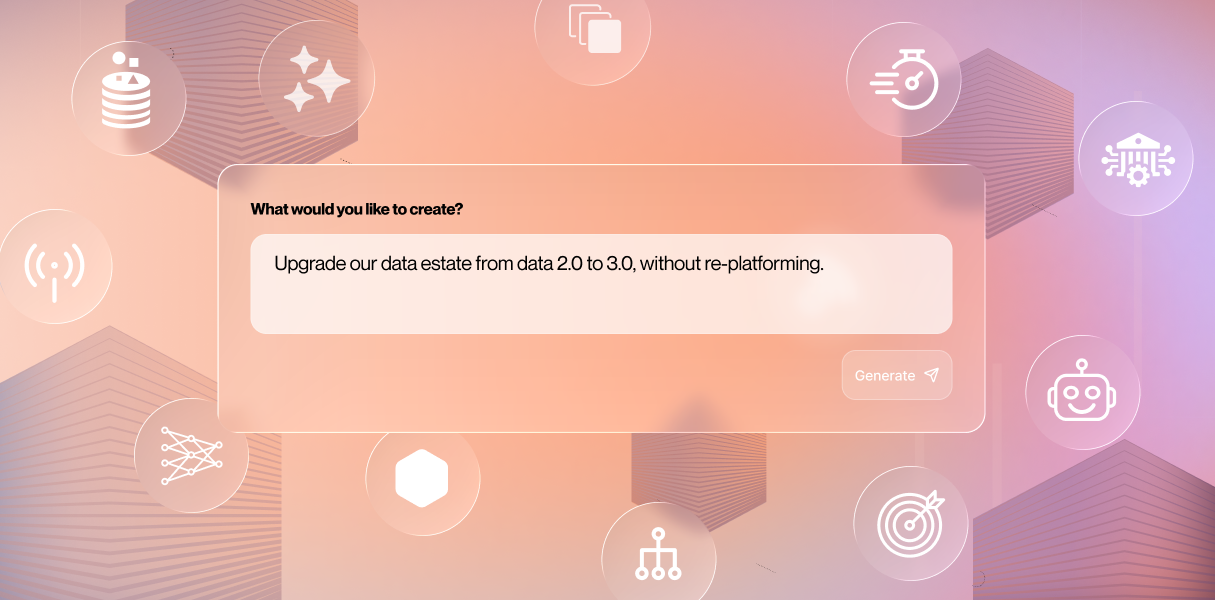Autonomous Data Products
How to turn legacy data into autonomous data products 50X faster with Nexty AI
Let’s face it—many of us inherit data infrastructure that looks more like a hairball than a highway: tangled pipelines, scattered scripts, outdated ETL jobs, and layers of transformation built by many hands over many years. Legacy data environments aren’t just messy—they’re combinatorially messy. Every new source, format, or tool explodes the number of configurations teams have to understand and manage.
Enter Nexty AI— a multi-agent system that turns that mess into something useful: domain-oriented, governed, running autonomous data products in minutes.
Nexty was designed to tackle one of the toughest problems in data: turning sprawling, legacy codebases into clean, business-aligned, autonomous data products—without requiring a long and expensive transformation project. Instead of starting from zero with a whiteboard and a hope, we start with what you already have: code and data.
How Nexty AI works
Nexty AI functions as a supervisor agent with multiple goals. One of its primary goals is to bootstrap a mesh of autonomous data products from existing legacy code—a task we refer to as the brownfield bootstrap goal.
Nexty manages the entire transformation process: from identifying business domains to designing, creating, and launching autonomous data products.
Under the hood, Nexty delegates its sub-goals to multiple AI agents, with each agent responsible for a critical part of the pipeline. Here are a few example agents:
- Mesh architect agent: Identifies business domains and data boundaries by applying established patterns and heuristics.
- Data product modeler agent: Analyzes legacy code and data structures to generate semantic models. It names entities in clear business terms and ensures alignment with governance expectations.
- Data product implementor agent: Refactors legacy code into clean, self-contained autonomous data products. Each product includes transformation logic, semantic model specifications, data contracts, inter-product dependencies, quality checks, infrastructure configuration, and documentation.
Together, these agents collaborate to turn complex, legacy environments into governed, interoperable, and launch-ready autonomous data products.

Why Nexty AI can 50X the speed of data transformation
Nexty AI achieves high-speed, high-precision transformation from legacy data to autonomous data products by leveraging several foundational capabilities:
- Standardization via the Nextdata specification: Nexty AI is trained on the standardized blueprint for autonomous data products, including both their build-time standard packaging and runtime standard container/API definitions.
- Automation through Nextdata OS: It uses automation tools provided by Nextdata OS to seamlessly launch, run, and monitor the autonomous data products it generates.
- Self-managing data products: Once launched, each autonomous data product (ADP) is fully self-governing. It provisions its own infrastructure, orchestrates its transformation logic, senses inputs, applies contracts at runtime, and manages dependencies—automatically.
- Learned patterns for domain modeling: Nexty AI has been trained on numerous prior transformations, enabling it to propose informed, sensible defaults for business-centric domains and domain-oriented data product models.
Nexty AI continues to improve rapidly as it’s enriched with new context and transformations—constantly learning to deliver even faster, smarter results.
How to use Nexty AI
Using Nexty AI is simple: just launch it, point it to a repository containing SQL and ETL logic, and start interacting through its prompt. You can ask it to explain the source logic and transform it into a mesh of autonomous data products.
Nexty analyzes the codebase to identify layered architectures (e.g., medallion), trace source systems, flag redundant transformations, and begin mapping everything to business intent.
In one recent example, Nexty AI scanned a retail environment and detected a medallion architecture. It correctly identified the bronze, silver, and gold layers; traced source systems like Amazon APIs and SAP; and highlighted areas of unnecessary computation and storage that added no business value.
Even better, it generated a simplified visual of the architecture to help us quickly understand the current state and prepare for change.
Once it understands your landscape, Nexty proposes an initial draft of business domains and autonomous data products—effectively bootstrapping your data mesh from zero. And it’s not guessing.
It’s turning chaos into structure: domain-aligned, versioned, and fully spec’d data products, ready for review and launch.
What Nexty AI delivers
When Nexty AI completes its run, you’re not just left with abstract suggestions—you get a fully mapped mesh of business domains such as:
- Retail Operations
- Product
- Vendors
- (And yes, even a suspiciously generic “Analytics” domain we’ll revisit…)
Within each domain, you’ll see well-defined data products—both source-aligned and derived. Everything generated by Nexty follows the Nextdata standard, meaning it’s not just raw code—it’s portable, governable, and ready for production.
Each autonomous data product includes:
- Lineage: Traces upstream dependencies and aligns with business semantics
- Contracts: Defines input expectations and output guarantees
- Code: Refactored transformation logic scoped to the product
- Semantic Models: Governed schemas expressed in business terms
- Naming: Clear, business-readable names and descriptions
- Traceability: Direct references to the original legacy code and assets
This isn’t passive documentation—it’s active transformation.
A closer look at an example: vendor inventory
Let’s zoom into one of the generated products—vendor inventory.
Nexty shows:
- Its domain alignment (Vendors)
- Upstream sources (e.g., Amazon and 7-Eleven)
- Input/output semantic expectations
- SQL code, made legible and structured
- Contracts with guarantees
- And even traces the new code to original legacy code for traceability
It’s clean, transparent, and ready to launch—no need to manually stitch together orchestration, contracts, or lineage.. These products are now autonomous—able to self-orchestrate, self-document, and evolve independently.
From confusion to confidence
By the end of the process, you’re not staring at a mystery anymore. You’ve got a clearly mapped business data mesh, populated with well-bounded, interoperable, and AI-ready autonomous data products. And because the transformation is grounded in your actual data and code, the result is immediately actionable.
Nexty gives you a strong V0.1—and the confidence to move forward.
Why this matters
Too often, transformation projects stall before they start, mired in conceptual debates and organizational politics. Nexty gives you a practical way to start doing—to generate tangible, reviewable, and explainable artifacts that kickstart your modernization effort.
And because it’s powered by multi-agent AI, Nexty doesn’t just save you time. It helps you build trust, transparency, and momentum—the real drivers of sustainable change.
Nexty AI gives us superpowers. And it’s just getting started.



.png)







